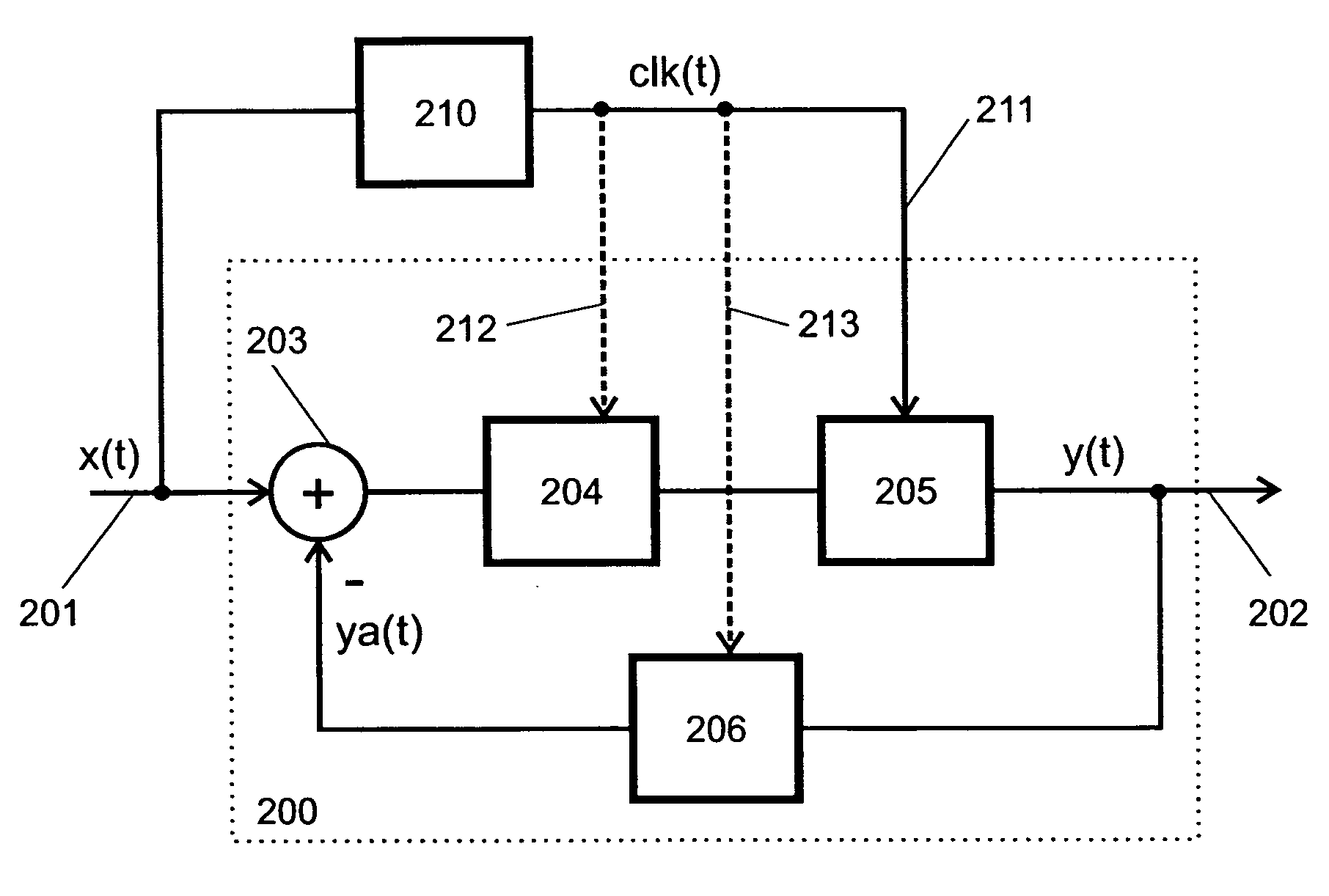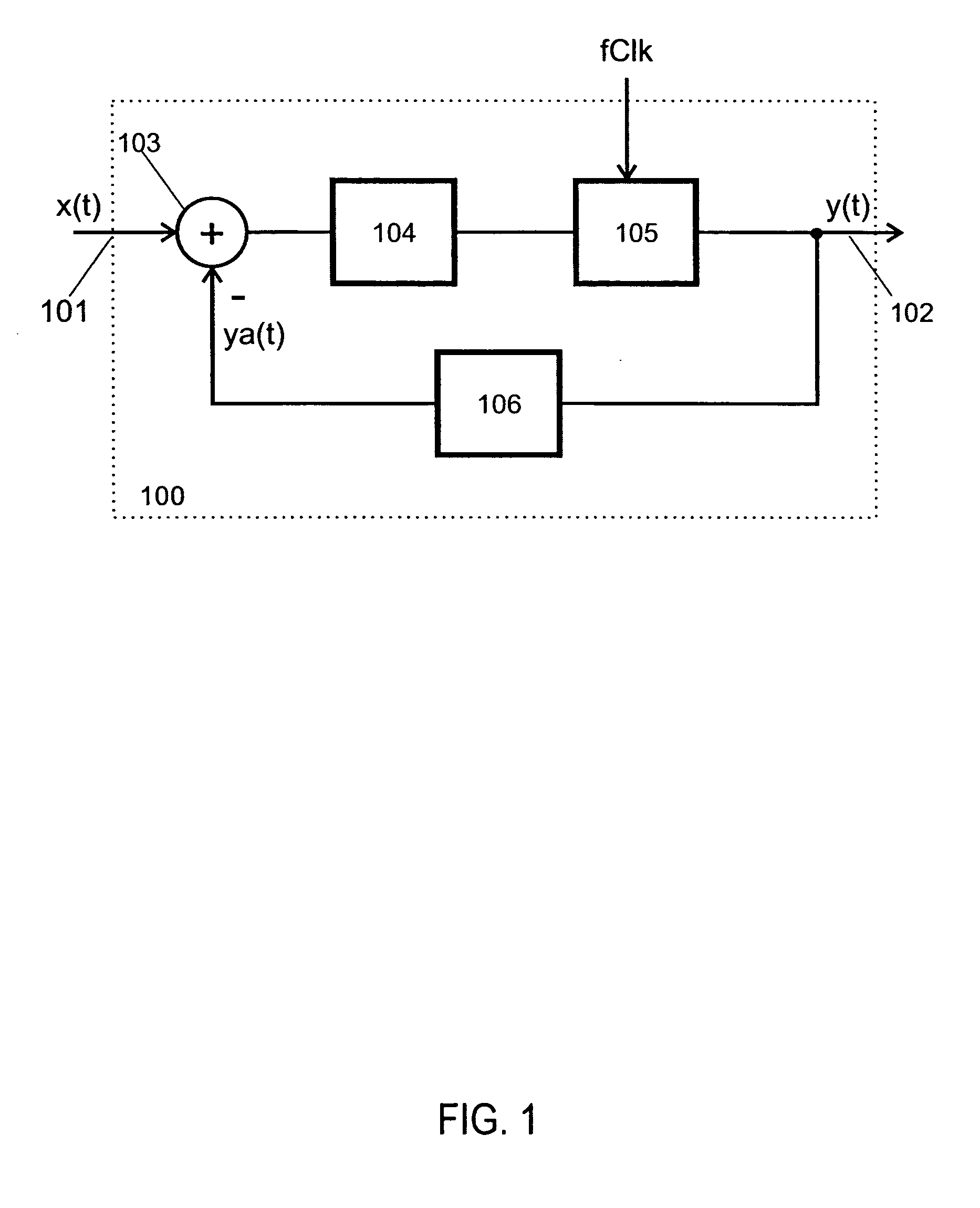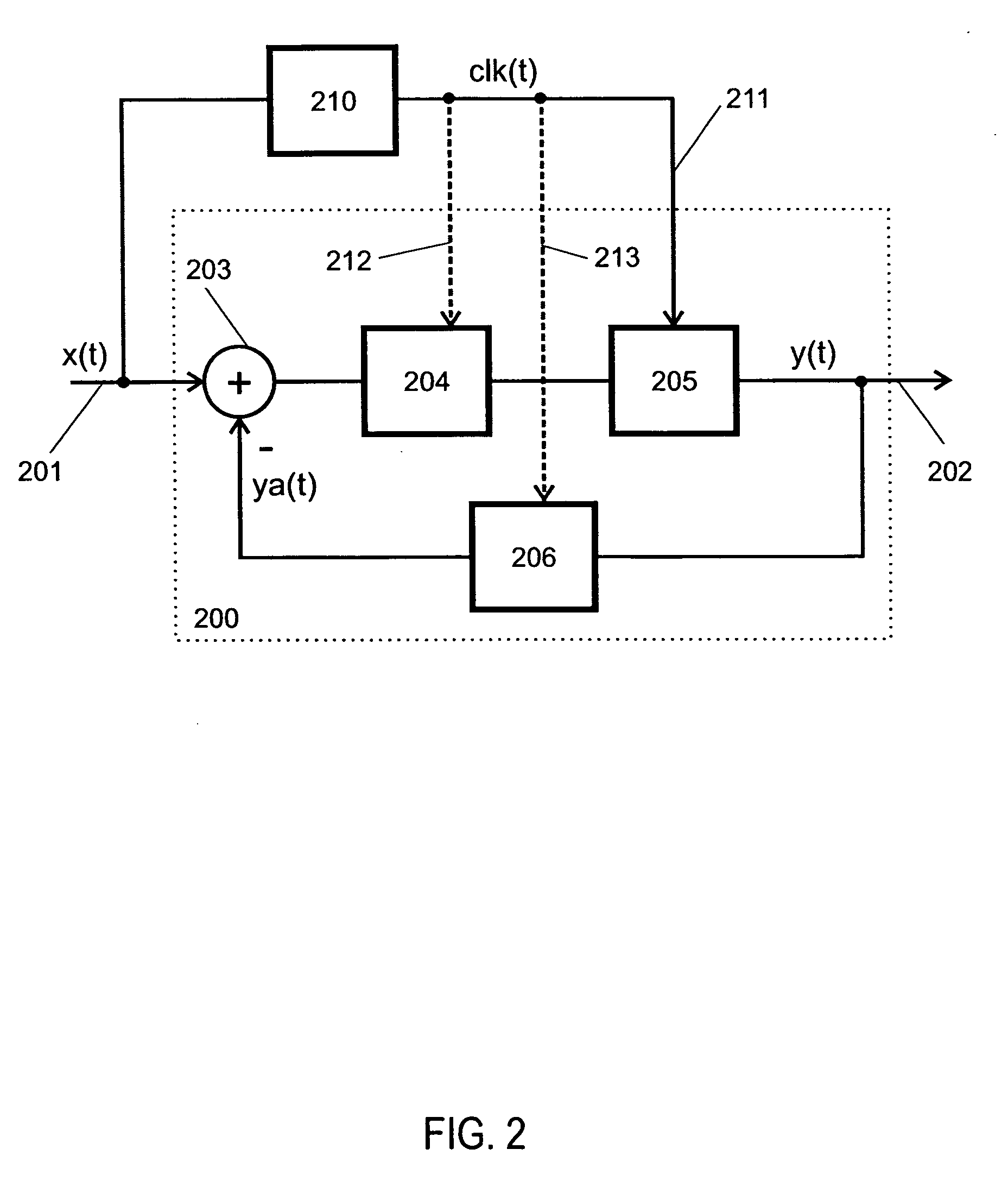Apparatus for and method of sigma-delta modulation
a sigma-delta modulator and apparatus technology, applied in the field of apparatus for and a method of sigma-delta modulation, can solve the problems of high noise suppression in the signal band of the useful signal, noise components also occur in the signal range of the input signal, and the instability of sigma-delta modulators, so as to reduce sampling errors and simplify the use. , the effect of fewer errors
- Summary
- Abstract
- Description
- Claims
- Application Information
AI Technical Summary
Benefits of technology
Problems solved by technology
Method used
Image
Examples
Embodiment Construction
[0027]FIG. 1 shows a simplified block diagram of a conventional sigma-delta modulator 100. The input signal x(t) at the point 101 goes to a summing member 103 which subtracts from the input signal x(t) the output signal y(t) which is present at the node 102. The sum or difference formed in that way goes to circuit components 104 which form a transfer function H(z). After filtering of the signal with the transfer function H(z) in the block 104, it is converted into a digital signal by an analog-digital converter 105 with the clock rate fClk. That causes quantization noise to be added to the useful signal. The sampling rate fClk of the analog-digital converter 105 is kept constant. The output signal y(t) is converted into a, for example, value-continuous or value- and time-continuous signal ya(t) again by way of the digital-analog converter 106 and subtracted from the input signal x(t) in the summing member 103, as described hereinbefore. That implements a modulator loop. That provide...
PUM
 Login to View More
Login to View More Abstract
Description
Claims
Application Information
 Login to View More
Login to View More - R&D
- Intellectual Property
- Life Sciences
- Materials
- Tech Scout
- Unparalleled Data Quality
- Higher Quality Content
- 60% Fewer Hallucinations
Browse by: Latest US Patents, China's latest patents, Technical Efficacy Thesaurus, Application Domain, Technology Topic, Popular Technical Reports.
© 2025 PatSnap. All rights reserved.Legal|Privacy policy|Modern Slavery Act Transparency Statement|Sitemap|About US| Contact US: help@patsnap.com



